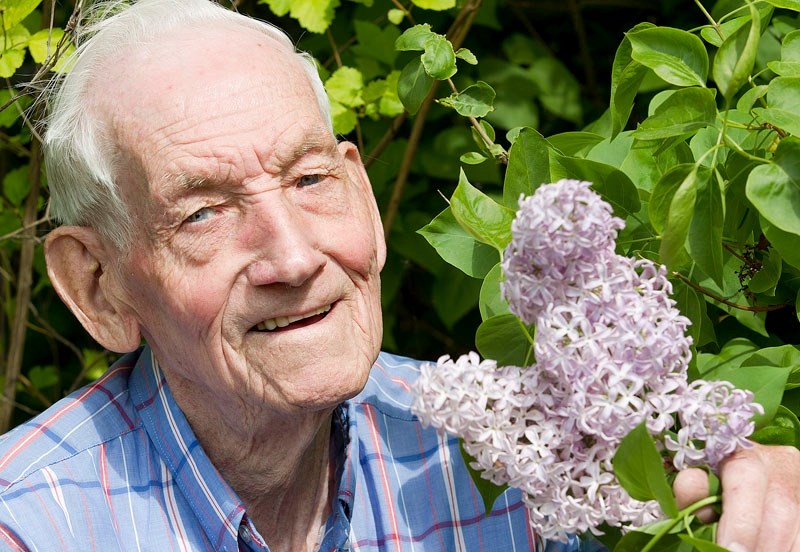You cannot walk through the streets of St. Albert or even drive through the countryside during the first two weeks of June without smelling lilacs.
Often you smell their perfume before you see the blooms and a quick following of the nose will lead you to a hedgerow of fragrant purple or white blooms. Lilacs are everywhere and so well known that the very name lilac is synonymous with their colour and fragrance. But despite their commonality, they are not native to North America.
"Lilacs came from China originally," said John Beedle, who is a retired horticulturist from the City of St. Albert and a volunteer with the St. Albert Botanic Park.
The first European to be enticed by the heady perfume of lilacs was French Jesuit missionary Pierre d'Incarville of France who in 1742 discovered them in the Beijing Mountains. Eighty years later, Russian botanist Alexander Bunge sent lilac specimens back home and the first whiff of their blooms likely caused a small stampede to the Siberian growing centres of the day.
These early botanists did not have an easy time of it, but apparently the lilac lure was sufficient to drive them to find ever more of the heady-smelling species. They travelled to China, Mongolia, Tibet and Afghanistan in search of lilacs.
One Ernest H. Wilson, who collected lilacs and lilies from 1901 to 1926 in China, was searching for plants with a party of coolies when they were struck by an avalanche. Wilson was struck by a rock and both his legs were broken. Though racked with pain and carried on a litter, he continued to carry his plant specimens with him. At one point Wilson's party met a mule train of 50 mules. The mountain ledge was too narrow for both parties to pass. So the coolies laid Wilson on the ground and the fifty mules stepped over him one at a time.
But he made it home to England with his lilacs. Descendants of those early lilacs were developed and are still sold for home gardens everywhere.
Shelterbelts
The oldest lilacs still growing in the St. Albert Botanic Park were likely planted near the home of homesteaders Florence and Tom Atkinson, who lived there from 1917 to 1952.
"This is the Vulgaris lilac, which is more fragrant and more attractive [than hedge varieties]. It would have been planted near the house," Beedle said, pointing to the now 20-foot high specimen.
A 1933 Lacombe Nurseries catalogue describes the attributes of this lilac as having a "nobility and a haunting aura of romance and memory that makes them almost enchanted things." These "enchanted" shrubs were marketed as being "essential for the adornment of every planting."
In contrast, the Late Chinese Lilac, a variety of which is used as a hedge to cover the fence along Red Willow Park, was sold because it is an excellent windbreak.
The dust-bowl drought conditions of the 1930s led the federal and provincial governments of Saskatchewan and Alberta to actively promote the growing of shelterbelts.
"Good shelterbelts were usually layered with five different types of trees and shrubs, including spruce, a deciduous tree and an inside layer of caragana, lilacs or honeysuckle," said semi-retired provincial horticulturist Brendan Casement.
These shelterbelts could be one mile long and the low-leafing habit of the Late Chinese Lilacs made them the perfect choice for farmers wishing to protect their soil.
Stroll through the St. Albert Botanic Park this week and you'll see 60 new modern varieties of lilacs, most of which are blooming now.
Botanists are still fiddling with hybridizing the lilac. Two new varieties are the Josee, which has a reblooming habit and the even more successful Bloomerang variety.
"Bloomerang will bloom in the spring and then rebloom perhaps a month later. And it doesn't sucker," said plant buyer Stephen Raven of Hole's Greenhouses & Gardens.
Despite 200 years of hybridizing, however, the colour palette of lilacs is much the same with variations of mauve, purple, reddish purple and white being the only available shades.
All lilacs tend to have the same memorable perfume wherever they grow.
"Thankfully, hybridizing hasn't changed that. The perfume is always the same," said Raven.




